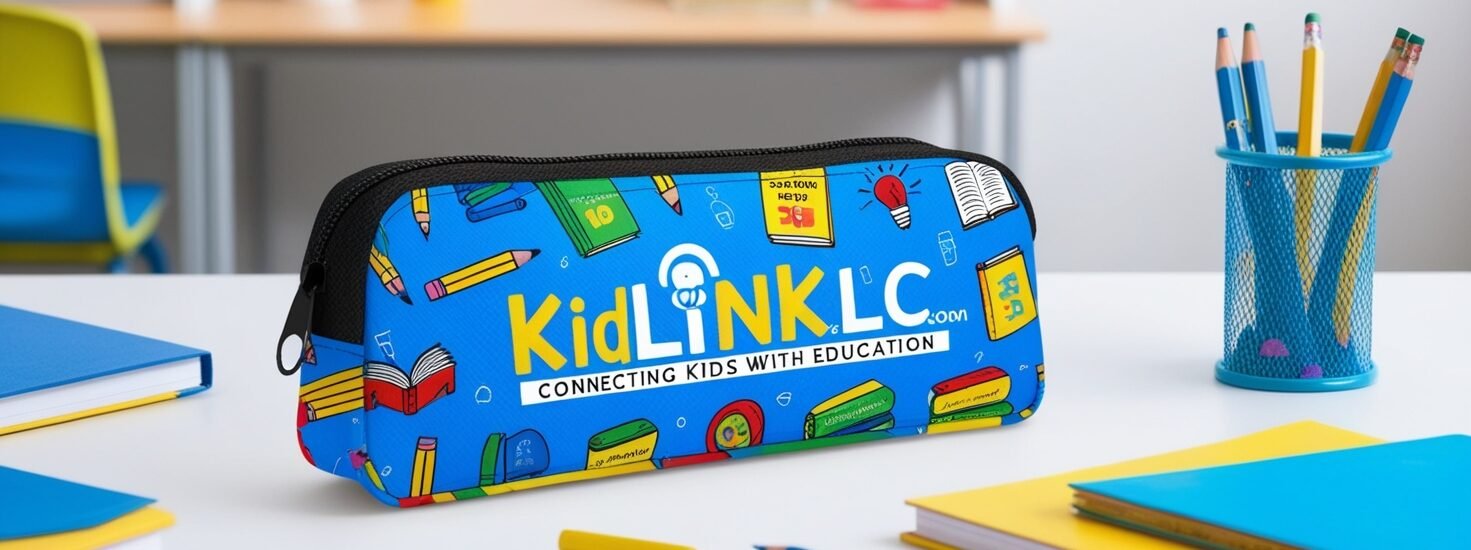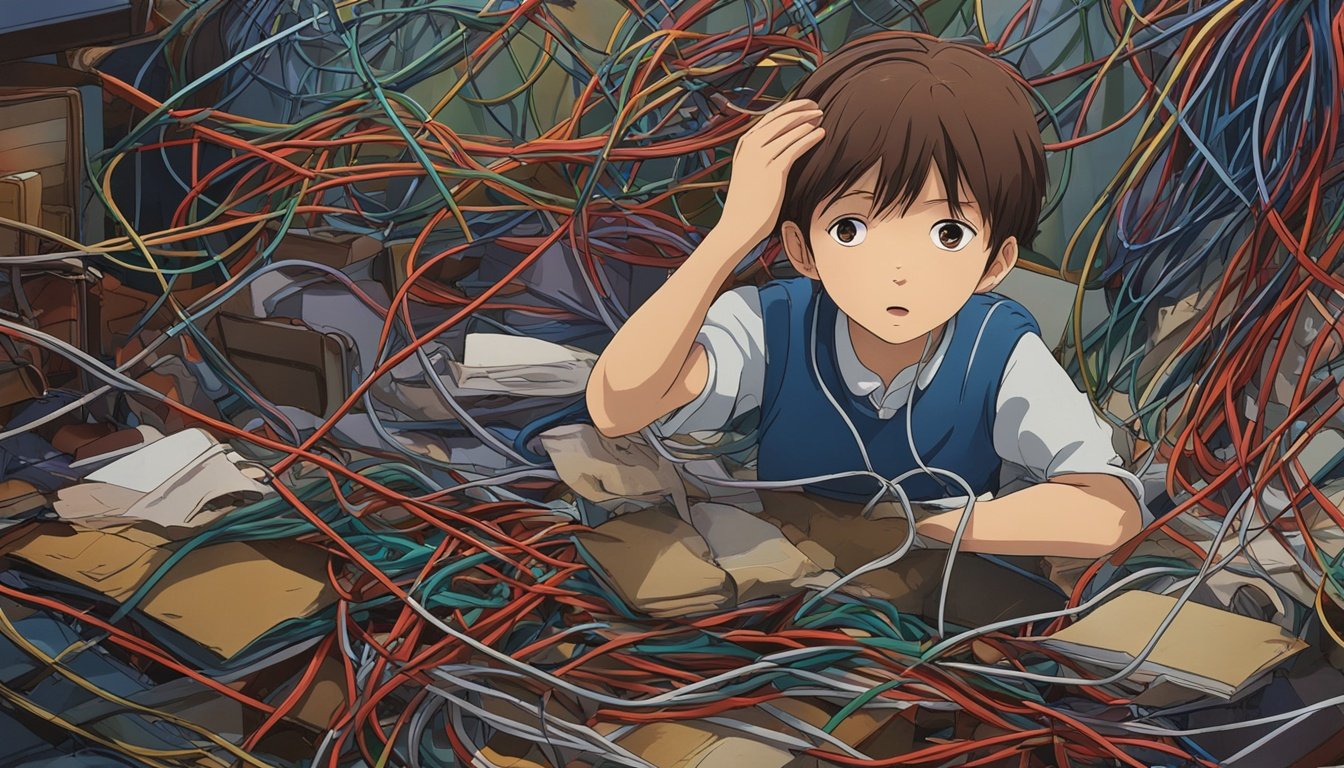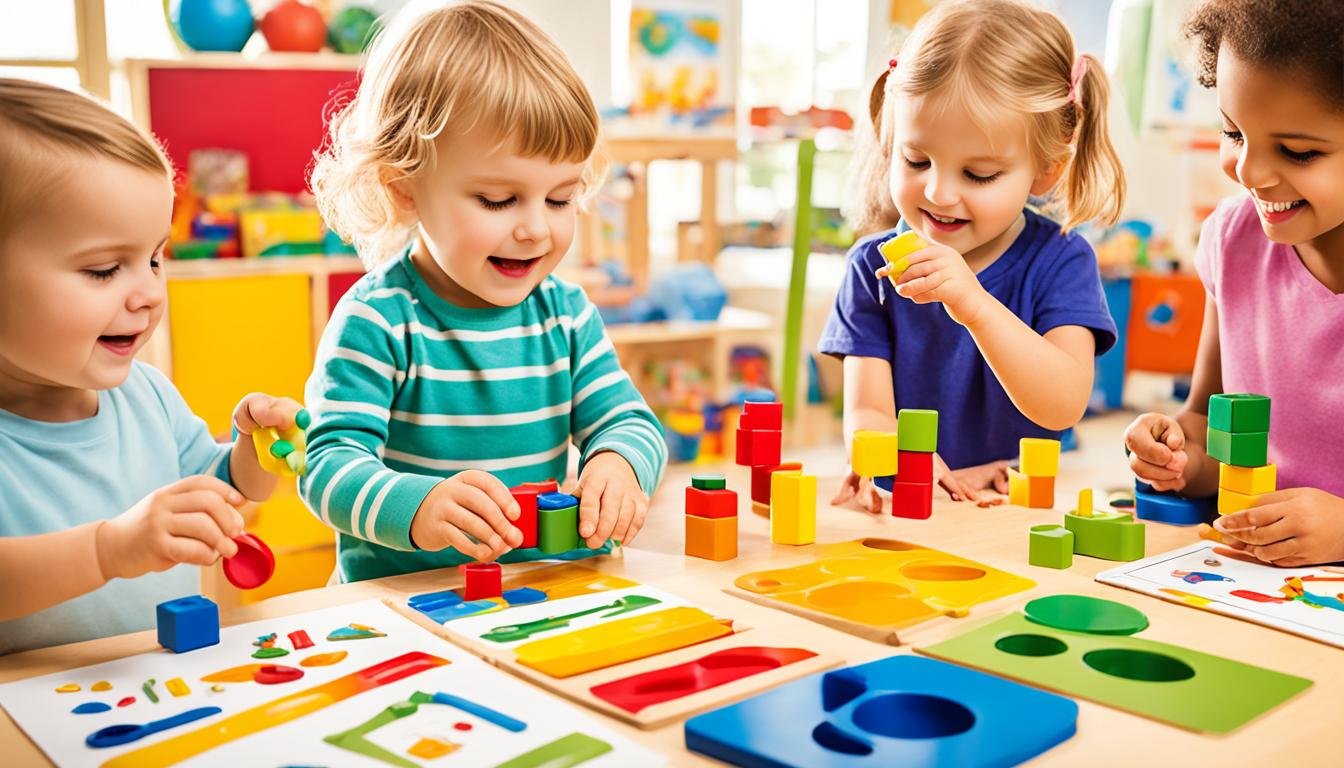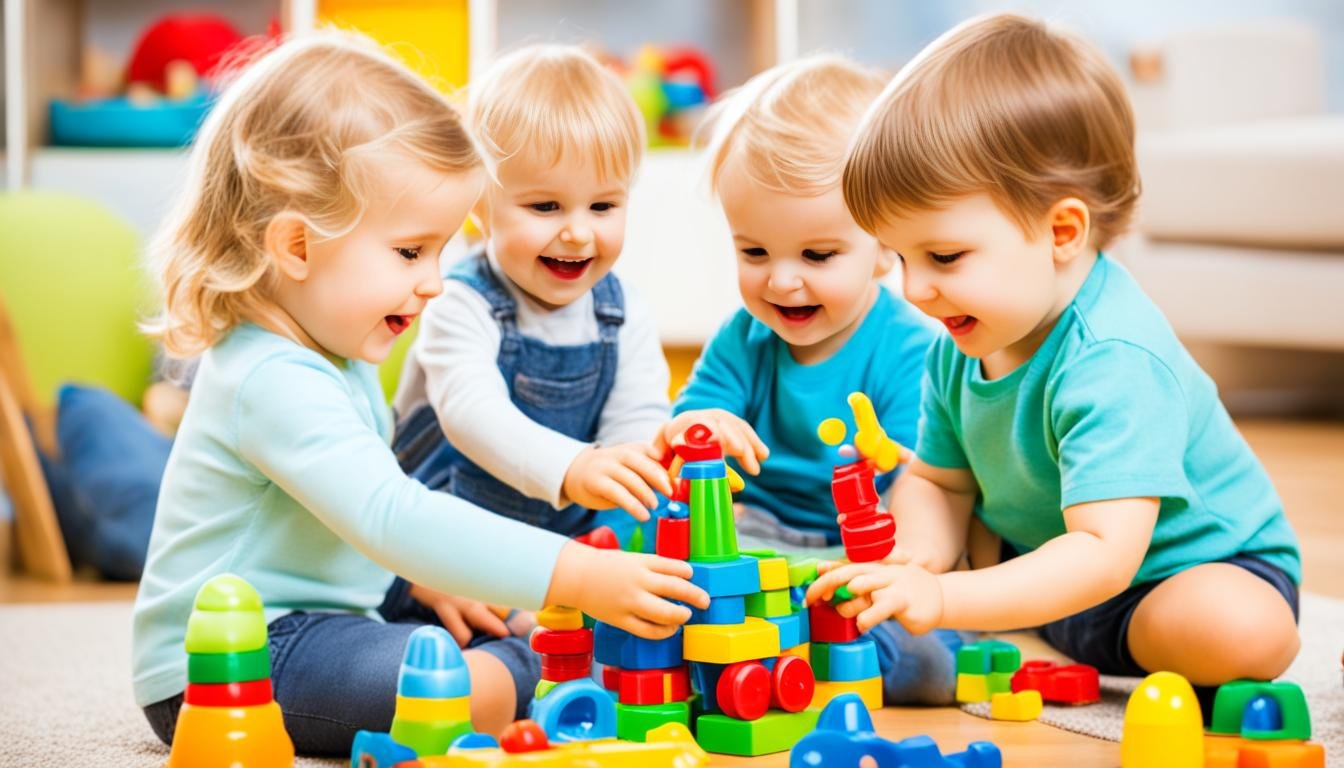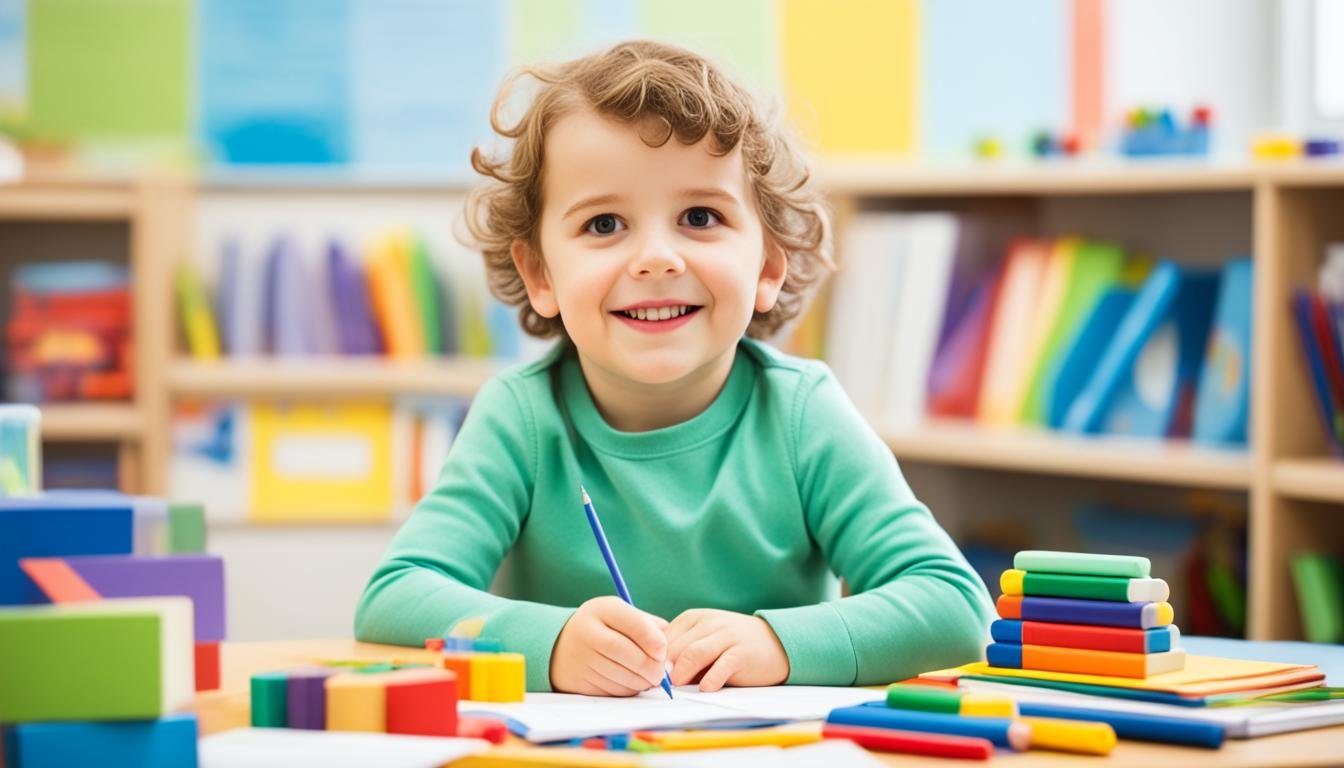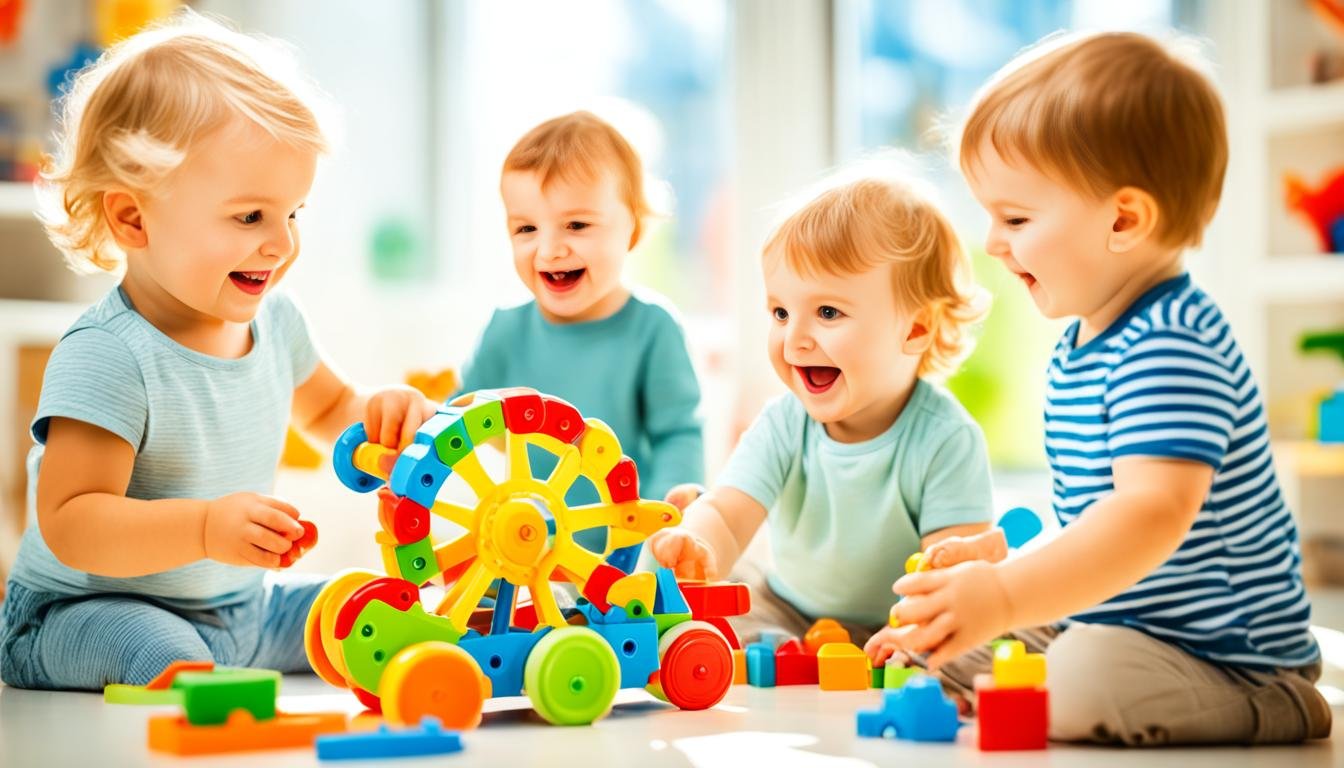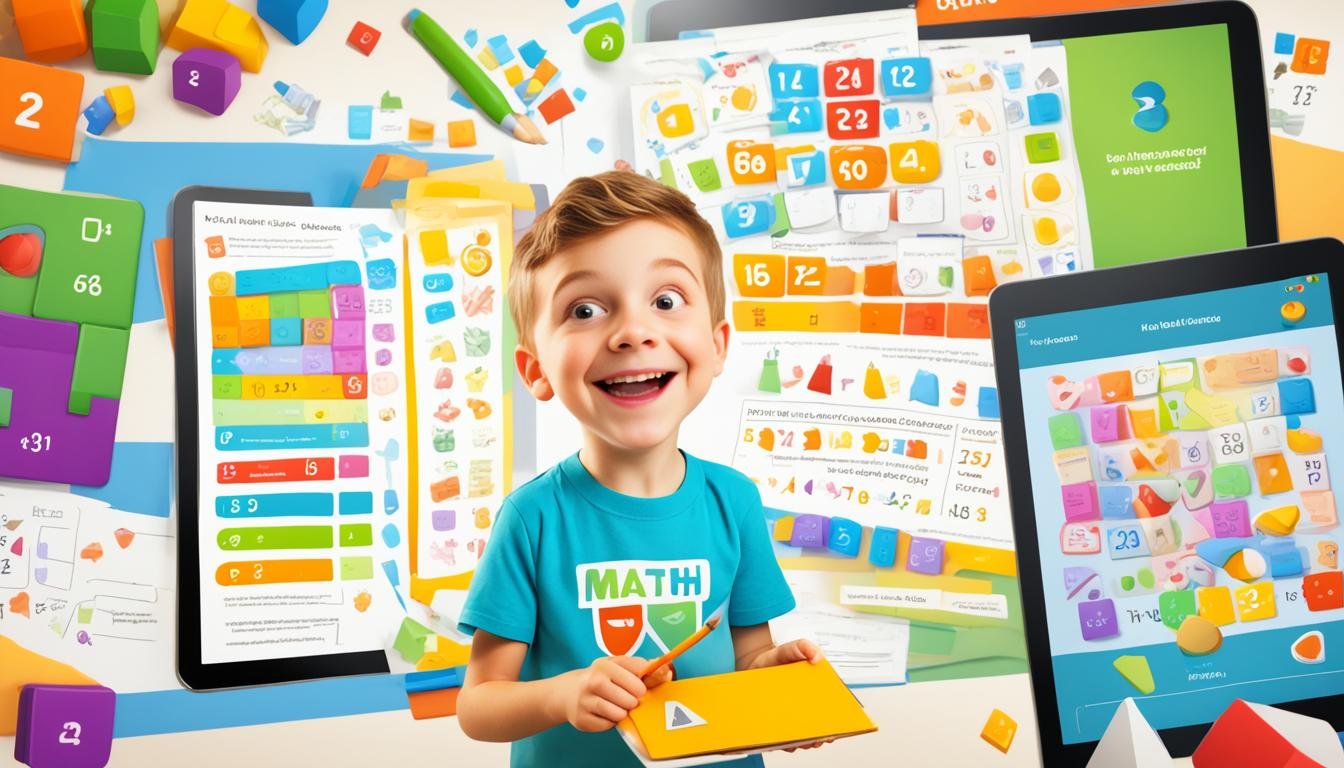Have you ever thought about how anxiety affects your child at school? It’s important to know how to help them with their anxiety. This can help them do well in school and feel good about themselves. I’ll share some key ways to help your child deal with anxiety and understand what they go through.
Key Takeaways
- Recognizing early signs of anxiety is crucial for timely intervention.
- Understanding the triggers of anxiety can help create a supportive environment.
- Utilizing effective coping strategies can empower your child.
- Open communication about feelings fosters trust and understanding.
- Professional help may be necessary for severe cases of anxiety.
Understanding Anxiety in School-Aged Children
Anxiety in school-aged kids comes from things like school work and making friends. While some anxiety is normal, too much can really get in the way of their day and happiness. Starting a new school or dealing with friends can make kids feel really scared and change how they see things.
Kids with anxiety might feel sick like they have headaches or stomachaches. These feelings can make it hard for them to pay attention in class, which can hurt their school work. It’s important to know these signs so we can help them with resources and help. Starting to address this early can lead to better ways to help kids with school anxiety, making school and home supportive places.
Anxiety can happen in many places and situations. As a parent, it’s key to look for anxiety in children resources to help my child. The sooner I spot these signs, the faster I can help my child deal with stress. My aim is to help my child be strong, so they can overcome any hurdles they face.
| Type of Anxiety | Common Symptoms | Intervention Strategies |
|---|---|---|
| Separation Anxiety | Clinginess, tantrums when apart from caregivers | Gradual separation, reassuring routines |
| Social Anxiety | Avoidance of social situations, fear of embarrassment | Role-playing social interactions, exposure therapy |
| Generalized Anxiety | Excessive worry about various aspects of life | Cognitive-behavioral techniques, mindfulness practices |
Common Signs of Anxiety in Children
It’s crucial for parents and teachers to know the signs of anxiety in kids. Spotting these signs early can help support children with anxiety. Anxiety shows up in both physical and emotional ways in kids. Knowing these signs helps us help them sooner and better.
Physical Symptoms of Anxiety
Children with anxiety may show physical signs. These include:
- Stomachaches
- Headaches
- Fatigue
- Increased heart rate
- Visible signs such as sweating or shaking
Seeing these signs in kids during stressful times means we should act fast. Helping them feel better can reduce their anxiety.
Emotional Indicators of Anxiety
Emotional signs of anxiety are also clear. Anxious kids might:
- Irritability
- Restlessness
- Excessive worry about daily activities
- Reluctance to engage in social situations
- Fear of separation from parents
Knowing these signs helps me support them better. Helping kids share their feelings creates a safe space for them to talk about their struggles. For more info on supporting kids in school and beyond, check out KidLinkLC.com.

Recognizing Triggers of School Anxiety
Understanding what causes school anxiety helps parents and kids manage it better. By knowing the triggers, we can make plans to overcome the challenges kids face.
Academic Pressures and Performance Anxiety
School can be very stressful for kids. The fear of failing tests or speaking in front of others can make them anxious. This anxiety can hurt their grades and make them feel less confident.
It’s important to know what causes this stress. By talking openly, we can help kids share their worries. This creates a supportive space for them.
Social Fears and Peer Interactions
Many kids feel anxious about being around their peers. Fears of being bullied or not fitting in stop them from being social. As parents, talking about friendships and social life can help ease these worries.
Supporting kids in tough social situations helps them become more resilient. It also builds their confidence.
Changes in Routine or Environment
Moving to a new school or starting a new semester can make kids anxious. These changes upset their routine and make them feel unsure. Talking about what they might face helps them prepare.
This way, they can learn how to handle their anxiety. Knowing what to expect helps us find ways to cope.
When dealing with these issues, it’s good to look for resources that offer guidance. With the right support, we can help our kids through these tough times.
Reasons to Address Anxiety in School-Aged Children
It’s crucial to tackle anxiety in kids for their growth. Anxious kids often find it hard to focus, which can lead to lower grades and less class participation. Managing childhood anxiety early can stop long-term academic problems.
Impact on Academic Performance
Anxiety affects a child’s school life. Kids with anxiety may struggle with tests and staying engaged in class. This can make them lose confidence. Early help is key to teaching kids good learning habits. Using techniques like relaxation exercises can help them focus and do better in school.
Influence on Social Development
Anxiety can hurt a child’s social growth. They might find it tough to make friends or join in group activities, leading to feeling alone. Helping them through open talks and encouraging social activities can improve their relationships. Being active socially boosts their skills, and tackling anxiety helps them have a richer social life.
Easing Reducing Long-Term Mental Health Risks
Dealing with anxiety early is key to avoiding future mental health issues. Kids who learn to cope are less likely to face big problems as adults. This builds resilience, helping them deal with stress better in the future. Early support is vital for their emotional health now and later.
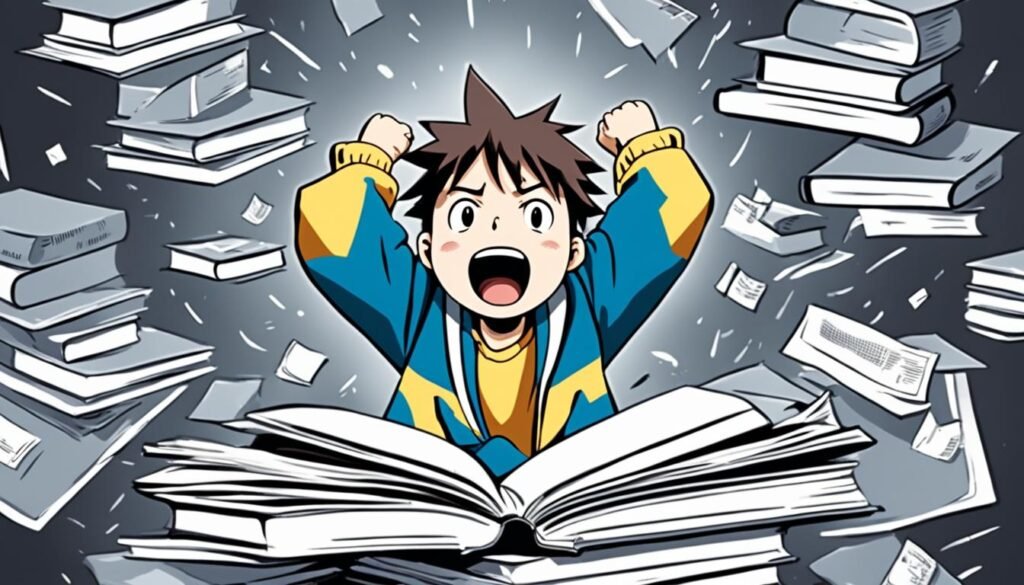
How to Talk to Your Child About Their Anxiety
Talking to kids about their anxiety can seem tough. But, knowing how to talk about it can really help. It’s important to create a safe space for them to share their feelings without fear. This helps them feel understood and supported.
When we talk about their worries in a calm way, it helps everyone understand better. It makes them feel heard and valued. This kind of support is crucial for kids who are anxious.
Creating an Open Dialogue
Listening without judging is crucial. By letting kids share their fears, we help them open up. This makes our bond stronger and helps them deal with anxiety better.
Here are some tips for parents on managing children’s school anxiety through effective communication:
- Choose a quiet time to have the conversation.
- Ask open-ended questions to encourage discussion.
- Reassure them of your support and understanding.
Encouraging Expression of Feelings
Creative activities can help kids express their feelings. Things like drawing, painting, or journaling let them show emotions they can’t say out loud. This can make them feel less alone with their anxiety.
I suggest parents try these ideas:
- Provide art supplies and set aside time for creative activities.
- Encourage journaling as a daily practice to express thoughts and emotions.
- Discuss the artwork or journal entries together to deepen understanding.
Using these methods, I create a safe space for my child to talk freely. By encouraging them to express their feelings, I offer the emotional support they need. This helps them on their path to managing anxiety.
Tips for Parents to Address Anxiety in School-Aged Children
As a parent, knowing how to help my child with anxiety is crucial. Spotting anxiety signs early lets me act fast. Here are key tips to help tackle this issue.
Practice Active Listening
Listening well is key for anxious kids. By focusing on my child, I show I care and understand. This builds trust and makes them open up more.
It helps me understand their anxiety better. This way, I can respond in the right way.
Reassure Your Child
Reassuring anxious kids helps ease their fears. I tell them their anxiety is okay and I’m here for them. Encouraging them to face their fears builds their confidence.
Regular reassurance lowers their anxiety over time. It makes them feel safe and secure.
Teach Coping Mechanisms
Teaching my child how to cope is key for their future. Showing them ways to lessen anxiety empowers them. Techniques like deep breathing and mindfulness keep them calm when stressed.
Having a daily routine also helps. It gives them something to rely on in hard times.

| Techniques for Reducing Child Anxiety | Description | Benefits |
|---|---|---|
| Active Listening | Giving full attention to your child’s feelings. | Builds trust and encourages open communication. |
| Reassurance | Helping your child understand their anxiety is manageable. | Boosts confidence and reduces fear. |
| Coping Mechanisms | Teaching practices like deep breathing and mindfulness. | Empowers children to handle stress effectively. |
| Routine Establishment | Creating a consistent daily schedule. | Provides a sense of stability and predictability. |
Parental Tips for Managing Child Anxiety
Managing anxiety in children means using simple strategies every day. It’s key to create a supportive space for them. This includes setting up routines that help anxious kids feel secure.
A steady daily plan makes things predictable. This predictability lowers anxiety since my child knows what’s coming each day.
Establishing Routines
A structured routine is comforting and calming. I make sure our mornings are always the same. We start with breakfast, then get ready for school.
This routine helps ease morning anxiety before the day begins.
Promoting Healthy Lifestyle Choices
Healthy habits are just as important as routines. I focus on regular exercise, healthy food, and enough sleep for my child. Activities like playing outside or sports help reduce school anxiety.
Also, a balanced diet with fruits, veggies, and whole grains boosts mental and physical health. Getting enough sleep is crucial for managing anxiety, so I ensure my child sticks to a regular sleep schedule.
Supporting Anxious Children in School Settings
Helping anxious kids in school is key for their happiness and doing well in school. Talking with school staff is the first step in understanding what each child needs. By talking often with teachers, we can learn what makes a child anxious and how to help. This way, teachers can give the right support and changes to my child’s classroom.
Communicating with Teachers and Staff
Building a good relationship with teachers and staff is crucial when dealing with anxiety in kids. By sharing my child’s specific struggles, teachers can adjust their teaching. This includes talking about what makes my child anxious, what helps them feel better, and checking in regularly to see how they’re doing.
- Discussing specific triggers that may cause anxiety.
- Sharing any coping techniques that have been effective at home.
- Setting up regular check-ins to monitor my child’s progress.
Implementing School-Based Support Programs
Many schools have great programs for kids with anxiety, like counseling or support groups. Being part of these programs helps my child learn how to cope and meet others who feel the same way. These groups are important for reducing anxiety and building strength. Here’s a look at some school programs:
| Program Type | Description | Benefits |
|---|---|---|
| Counseling Services | One-on-one sessions with a school counselor to address anxiety. | Personalized strategies and coping mechanisms. |
| Support Groups | Group sessions for students facing similar issues. | Peer support and shared experiences can alleviate feelings of isolation. |
| Workshops | Educational sessions for parents and children focusing on anxiety management. | Increased awareness and practical strategies for dealing with anxiety. |
For more tips on supporting kids with anxiety at school, I check out this blog post. It gives great advice and insights.

School Anxiety Relief Techniques for Children
Managing school anxiety is key for students’ well-being. I’ve found certain strategies help make school a calmer place for anxious kids. Here are some effective methods:
- Encourage Breaks: Short breaks can really help reduce anxiety.
- Introduce Relaxation Techniques: Deep breathing or guided visualizations can calm anxious students.
- Foster Peer Support: Peer support helps students feel less alone with their worries.
Using these techniques creates a supportive school environment. It’s great for students feeling anxious, helping them feel better overall.
| Technique | Description | Benefits |
|---|---|---|
| Encouraging Breaks | Short pauses in the academic schedule for relaxation. | Reduces stress, improves focus. |
| Relaxation Techniques | Activities such as deep breathing and mindfulness. | Eases anxiety, increases emotional regulation. |
| Peer Support Systems | Programs that foster collaboration among students. | Enhances communication, builds friendships. |
Coping Strategies for Children with Anxiety
Helping kids with anxiety means using many different strategies. I’ve seen that teaching kids how to cope with anxiety can really help them deal with stress. These strategies give kids the power to handle their daily challenges better.
Deep Breathing Exercises
Deep breathing is a great way for kids to feel less anxious. It helps them slow down their thoughts and ease their body’s anxiety signs. Doing this often lets them use these calm techniques when they’re stressed, giving them a sense of control.
Mindfulness and Relaxation Techniques
Using mindfulness, like meditation and yoga, can help kids stay in the moment. These activities help them relax and are great for school kids. Doing these regularly helps with anxiety and boosts their emotional health.
Building a Worry Journal
Keeping a worry journal is very helpful. It helps my child get better at sharing and thinking about their worries. This is key for learning how to deal with anxiety. They can see their anxiety patterns and learn to handle their worries better. I tell my child to write down how they feel, which helps them understand and manage their anxiety.

With the right strategies, we can change how kids deal with anxiety. By using these methods, they can get better at handling their feelings and become more confident. For more advice, check out what to do and not do when kids are anxious here.
Intervention Strategies for Childhood Anxiety
Helping kids with anxiety means working together. Parents, teachers, and mental health experts play a big role. Cognitive-behavioral therapy (CBT) is a key method. It helps kids change their anxious thoughts and behaviors. This leads to better ways of coping and feeling better overall.
From what I’ve seen, these strategies can really change how kids deal with anxiety. Working with kids in this way helps them grow and become more resilient.
Adding support at school can make these efforts even stronger. Schools can offer programs that help kids get the support they need. This makes a positive place for them to learn and grow.
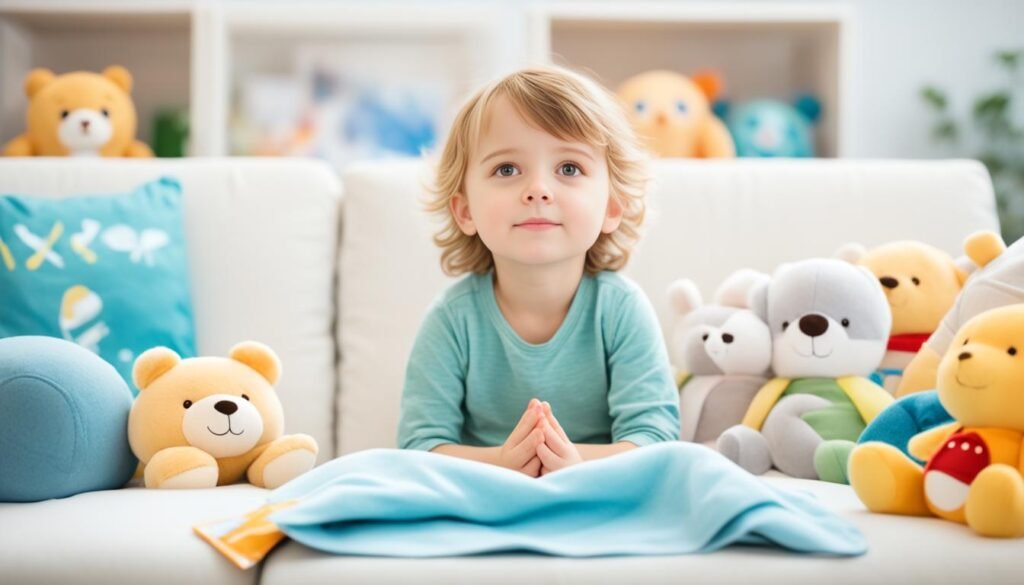
| Intervention Strategies | Description | Expected Outcomes |
|---|---|---|
| Cognitive-Behavioral Therapy (CBT) | A structured program focusing on altering negative thought patterns. | Reduction in anxiety symptoms and improved coping strategies. |
| Parent-Child Interaction Therapy | Involves parents in the therapeutic process, enhancing communication. | Stronger parent-child relationships and better emotional regulation. |
| Mindfulness Techniques | Encourages present-moment awareness to reduce anxiety reactions. | Increased calmness and stress resilience. |
| School-Based Support Programs | Integrates mental health professionals within the school environment. | Better access to mental health resources for children. |
Good strategies can really help kids with anxiety. They make their path to overcoming anxiety easier. For more details on how these strategies work, check out the info here.
Seeking Professional Help for Anxious Children
When my child’s anxiety stops them from doing daily activities, I know it’s time to get help. Knowing when to look for therapy can help my child feel better. A doctor or child psychologist can guide us to the right help for my child.
When to Consider Therapy
Some situations show it’s time for a professional to step in:
- Persistent anxious behavior that hampers everyday functioning
- Escalation of anxiety symptoms despite at-home strategies
- Inability to cope with school or social pressures
- Frequency of physical symptoms, such as stomachaches, linked to anxiety
Types of Therapy Available
Understanding the different therapies for child anxiety helps me make better choices. Each type offers unique benefits:
| Type of Therapy | Description | Suitable For |
|---|---|---|
| Cognitive-Behavioral Therapy (CBT) | Focuses on identifying and changing negative thought patterns | Children with specific anxiety disorders |
| Play Therapy | Uses play to help children express feelings and process experiences | Younger children who might not talk about their feelings |
| Exposure Therapy | Gradually exposes children to anxiety triggers in a controlled way | Kids with phobias or social anxiety |

Long-Term Anxiety Management Techniques for Children
To help children with anxiety, I focus on building resilience. These strategies teach coping skills and offer ongoing support. By boosting their confidence and using positive reinforcement, I help them manage stress and anxiety for life.
Building Resilience and Confidence
Building resilience is key for kids with anxiety. I encourage them to do activities that build self-esteem and problem-solving skills. These include:
- Participating in team sports or group activities
- Setting and achieving small goals
- Practicing positive self-talk
- Engaging in creative endeavors such as art or music
These activities help kids become more resilient. They learn to tackle challenges with confidence. It’s important to praise their efforts and achievements, no matter how small. This boosts their ability to handle anxiety and prepares them for the future.
Strategies for Ongoing Support
Supporting anxious kids is key for their emotional health. I create a caring environment by keeping communication open. Regular chats about their feelings help build trust. I also suggest:
- Identifying what makes them anxious
- Encouraging them to share feelings without fear
- Working together to set goals and track progress
These tips can really help anxious kids. With my support, they learn to manage their feelings better over time. This leads to a healthier mindset as they grow. Investing in these strategies helps them feel secure and independent in handling their anxiety.

| Technique | Description | Goal |
|---|---|---|
| Team Sports | Encourages collaboration and physical activity | Fosters teamwork and resilience |
| Goal Setting | Creating achievable milestones together | Boosts confidence and a sense of accomplishment |
| Positive Self-Talk | Encouraging children to affirm their abilities | Strengthens self-esteem and reduces anxiety |
| Creative Activities | Exploring hobbies like art and music | Enhances emotional expression and reduces stress |
Resources for Parents and Educators
Finding the right tools is key to handling childhood anxiety. It’s important to look for reliable and practical information. There are many anxiety resources for parents, like books and websites, designed for kids. These resources share real-life experiences and expert advice to help us.
Books and Websites on Childhood Anxiety
- The Anxiety Workbook for Teens by Lisa M. Schab offers exercises to help alleviate symptoms of anxiety.
- What to Do When You Worry Too Much by Dawn Huebner is a guide for children to learn how to manage anxious thoughts.
- Child Mind Institute’s website provides numerous articles on understanding and addressing childhood anxiety.
- The Anxiety and Depression Association of America features a dedicated section for childhood anxiety resources.
Support Groups and Professional Organizations
Connecting with others can be very helpful. I suggest joining support groups for parents for emotional support and advice. Here are some key professional organizations for childhood anxiety:
| Organization | Focus Area | Resources Available |
|---|---|---|
| Child Mind Institute | Mental Health Support | Workshops, Articles, Webinars |
| Anxiety and Depression Association of America | Research and Awareness | Toolkits, Therapist Directory, Advocacy |
| National Institute of Mental Health | Research and Information | Publications, Guidelines, Reports |
| International OCD Foundation | Obsessive-Compulsive Disorders | Support Groups, Information Resources |
Using these resources helps me find child-friendly anxiety strategies that work for my child.

Conclusion
Understanding and tackling anxiety in school-aged kids is key for their happiness and health. We’ve looked at many ways to help anxious kids get better at handling stress. It’s clear that a supportive environment is crucial for their growth, affecting both their school work and social life.
Talking openly and listening to their needs is important. It helps me support anxious students well. If anxiety pops up, knowing when to seek professional help is also key. This helps kids get the tools they need to deal with their feelings. My dedication to this effort will help these young ones do well, finding happiness in school and daily life.
